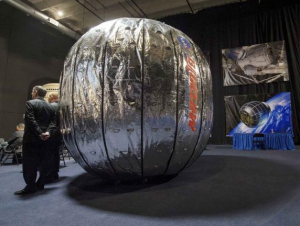No one from Earth has been to the moon since 1972, but Google’s Lunar XPRIZE has sparked an interest in returning. The Lunar XPRIZE is a race to the moon in which competitors must land a robot safely on the moon and send back “HDTV Mooncasts for everyone to enjoy.” The deadline is next year and it has created a growing interest in moon activity. One company, Bigelow Aerospace, has even developed inflatable habitats to set up in space. The program, known as BEAM, has been developed as an attachment to the International Space Station, but Bigelow would also like to launch these habitats to the Moon. Even though the 1967 Outer Space Treaty bans sovereign ownership rights to the moon, Bigelow may one day soon be allowed to place its habitats on the Moon.
As was outlined in a recent WJLTA blog article on Asteroid Mining, the Outer Space Treaty and the Moon Agreement currently govern space law. Though no sovereign can claim ownership in space, the Outer Space Treaty has potentially left open a loophole that could allow for nongovernmental, private entities to have ownership rights in space. Additionally, the 1979 Moon Treaty, which governs lunar activity was never signed by the U.S., leaving open another potential loophole for private American entities. Continue reading

